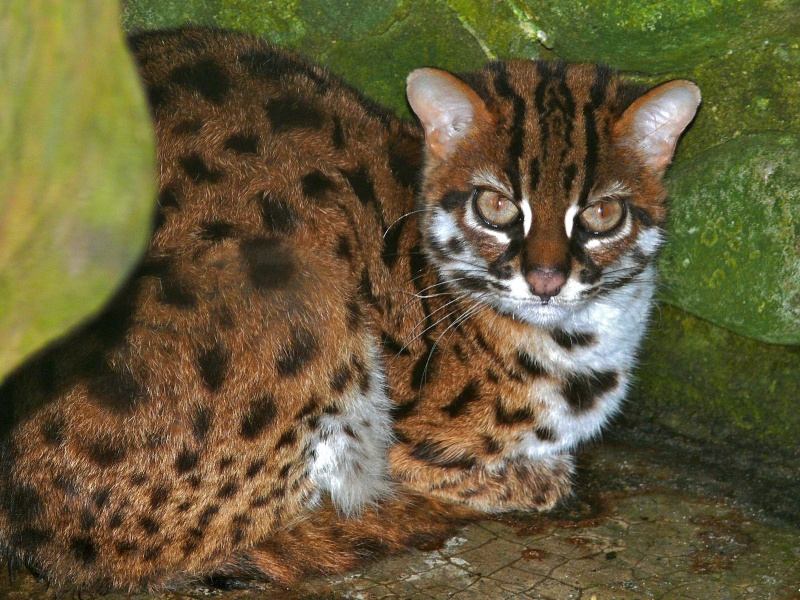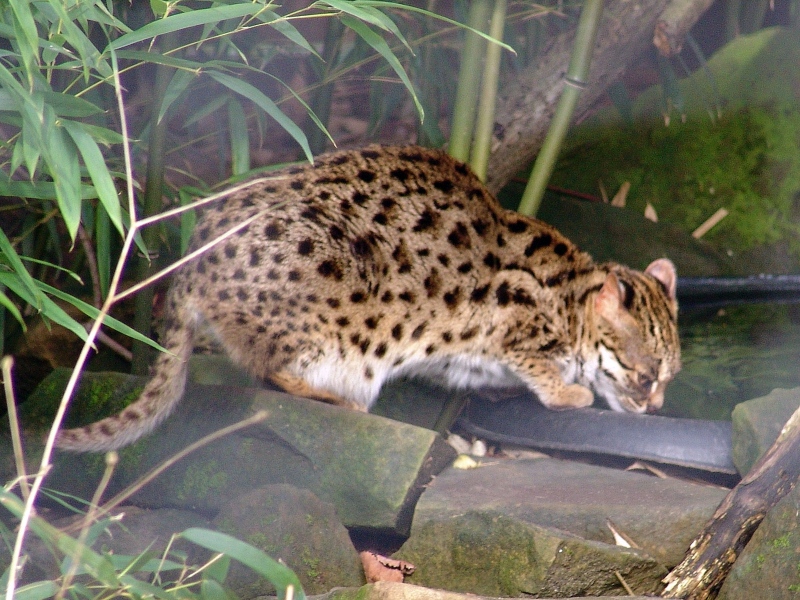Distinguishing features
They are about the size of a domestic cat, but more slender with longer legs and well-defined webs between the toes. Their small head is marked with two prominent dark stripes, their short and narrow muzzle white. There are two dark stripes running from the eyes to the ears, and smaller white streaks running from the eyes to the nose. The backs of their moderately long and rounded ears are black with a central white spot. Body and limbs are marked with black spots of varying size and color, and along the back are two to four rows of elongated spots. The tail is about half the size of their head-body-length and spotted with a few indistinct rings near the black tip. The background color of their spotted fur is tawny with a white chest and belly. But in their huge range, they vary so much in coloration and size of spots as well as in body size and weight that initially they were thought to be several different species. The fur color is yellowish brown in the southern populations, but pale silver-grey in the northern ones. The black markings may be spotted, rosetted, or even forming dotted streaks, depending on the subspecies. (Wikipedia)
Size
- Up to 66 cm (Head and body only) - applies to Those found in the tropics
Weight
- Up to 3.8 kg - applies to Those found in the tropics
Synonyms
Distribution and habitat preferences
They are the most widely distributed Asian small cats. Their range extends from the Amur region in the Russian Far East over the Korean Peninsula, China, Indochina, the Indian Subcontinent, to the West in northern Pakistan, and to the south in the Philippines and the Sunda islands of Indonesia.
They are found in agriculturally used areas but prefer forested habitats. They live in tropical evergreen rainforests and plantations at sea level, in subtropical deciduous and coniferous forests in the foothills of the Himalayas at altitudes above 1,000 m. (Wikipedia)
Diet
Leopard cats are carnivorous, feeding on a variety of small prey including mammals, lizards, amphibians, birds and insects. In most parts of their range, small rodents such as rats and mice form the major part of their diet, which is often supplemented with grass, eggs, poultry, and aquatic prey. They are active hunters, dispatching their prey with a rapid pounce and bite. Unlike many other small cats, they do not "play" with their food, maintaining a tight grip with their claws until the animal is dead. This may be related to the relatively high proportion of birds in their diet, which are more likely to escape when released than are rodents. (Wikipedia)


